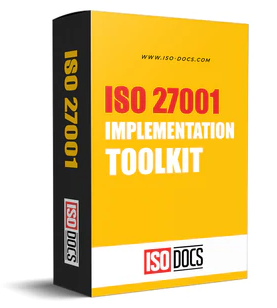Availability: Ensuring Reliable Access in Information Security?
Introduction
Indeed Information Security is not only the avoidance of disclosing data (Confidentiality) or falsifying information (Integrity), but protection from -what is equally important as the former two pillars- the third leg of the trident called Availability. Availability guarantees that an authorized user can always access an information system when needed. On the other side, a system that is secure but often keeps off is almost worthless to its user.

What Is Availability?
The Availability in Information Security is providing assurance that systems, applications, and also data are accessible by authorized users at any time needed.
Availability of systems ensures that business operations run without disruption, there are continuous services, and customers can depend on performance being the same with nothing changing. In fact, availability means not merely "up-time" but redundancy, scalability, and resilience.
Why Availability Matters
Ensuring availability is critical for companies in all industries. Reasons:
- Business Continuity – Systems and data should not be unavailable during an interruption.
- Better Customer Experience – Customers want services and platforms available 24/7.
- Compliance – Availability controls are mandated by standards such as ISO 27001, HIPAA, and PCI DSS.
- Financial Losses – A loss of revenue and penalties may result when services go down.
Key Principles Of Availability
To secure availability, the organization requires proactive measures and strategic planning to realize the core principles of :
1. Redundancy
- Duplication in critical paths such as systems, servers, and networks.
- Automatic switching fails within failover systems during failure.
2. Reliability
- Consistent performance at expected workloads without hurdles.
- Weaknesses identified with performance-monitoring tools.
3. Resilience
- Construct the systems offered with a cyberattack, hardware failure, or natural disaster beyond failure.
- Disaster recovery and business continuity plans must exist.
4. Scalability
- Ability of systems to grow with increasing numbers of users and data without any downtime.
- Cloud service is a typical solution for such increasing infrastructure.
5. Maintainability
- Objectives are easy to update, repair or reinstate systems.
- Regular maintenance schedules help eliminate the incidence of surprise outages.
Implementation Of Availability In ISO 27001
Availability controls will have to be embedded in the Information Security framework of the organizations. Implementation steps entail:
1. Business Impact Analysis (BIA)
- Crucial systems and data that should remain available are identified.
- Establish Recovery Time Objectives (RTOs) and Recovery Point Objectives (RPOs).
2. Disaster Recovery Planning
- Advance backup and recovery strategies for IT infrastructure.
- Regular testing of recovery procedures.
3. High Availability Systems
- Cluster servers, load balancers, and redundancy in the cloud.
- Real-time monitoring of systems to identify performance problems.
4. Monitoring & Incident Management
- Implement monitoring tools 24/7 to keep track of system health.
- The establishment of response plans in the case of outages and disruptions.
ISO 27001 Controls For Maintaining Availability
Also, ISO 27001 can provide diverse Annex A controls which organizations can adopt in ensuring availability.
a) Business Continuity Management: A.17
- Defines processes for maintaining availability amid crises.
- Includes disaster recovery and contingency planning.
b) Redundancy and Failover Systems (A.12)
- Minimize downtime with backup servers and mirrored databases.
- Load balancing prevents overload on single systems.
c) Access Control and Monitoring (A.9, A.12)
- Assured resources access from only the authorized user.
- Interruptions detected sooner with monitoring tools.
d) Backup and Recovery Solutions (A.12, A.17)
- Backups are taken regularly; this guarantees much faster restoration of lost data.
- Cloud-based solutions build up redundancy in recovery.
e) Incident Management (A.16).
- Establishes processes for detection, and reporting, and resolution of disruptions.
- Decreases mean time to restore (MTTR).
Best Practices For Maintaining Availability
Organizations should develop a centralized must-structured strategy to keep systems, applications, and data available at all times. Failure would cause structuring downtime and interruptions in service. These are some best practices that could then lead to ISO 27001 as well as compliance definition requirements above:
-
Install Robust Backup Solutions – Secure, automated, and frequent backups of all essential data. Place backups in different locations to retrieve files quickly and easily after failures, disasters, or attacks.
-
Cloud Infrastructure – Built-in redundancy, scalability, and disaster recovery are all features that come to organizations through cloud platforms. Cloud services enable organizations to maintain availability even during demand surges that were unexpected.
- Establish Service Level Agreements (SLAs) – Identifying and enforcing clear SLAs within internal teams and third-party vendors should be done.
Conclusion
Availability stands out as the third leg of the CIA triad, meaning that authorized users can have access to information and systems when needed. With confidentiality and integrity, availability then constitutes a wholesome Information Security framework. The controls set for availability according to ISO 27001 are guarantees that organizations can upscale resilience, downsize the frequency of downtimes, and continue to win the trust of customers. From redundancy and backup strategies to real-time monitoring and disaster recovery, availability is the cornerstone for all sustainable digital operations.


